Abstract
1 A modification of the Folkow Technique for simultaneous measurement of blood flow and capillary filtration coefficient (CFC) in the cat jejunum is described. The modification retained the sympathetic innervation of the preparation, and in the present experiments, drugs were administered intravenously.
2 There is evidence that CFC is a cardiovascular quantity independent of blood flow or regional vascular resistance in these preparations. Low doses of drugs may affect CFC without altering the blood pressure, blood flow, or heart rate.
3 Under control conditions the CFC, a measure of functional exchange vessel area, was lower than previously reported for similar, but denervated preparations.
4 α-Adrenoceptor stimulation with phenylephrine (1.0 μg kg-1 min-1, i.v.) caused a fall of 75-85% from control values of CFC with concomitant rises in blood pressure of 0-15% and falls in blood flow of 10-40%. The heart rate rose by 0-15%. Phentolamine (0.5-2.0 mg/kg, i.v.) caused a rise in CFC and a slight fall in vascular resistance, and blocked the effects of phenylephrine on this tissue.
5 β-Adrenoceptor stimulation with isoprenaline (0.2 μg kg-1 min-1, i.v.) caused a rise in CFC of 75-110%, a fall in blood pressure of 0-10%, a rise in blood flow of 10-60% and a rise in heart rate of up to 35%. Propranolol caused a transient rise in CFC when injected i.v. in a dose of 0.1 mg/kg, which was adequate to block the effects of isoprenaline.
6 Angiotensin (25-100 ng kg-1 min-1, i.v.) caused falls in CFC of up to 100% and rises in vascular resistance. Aminophylline (0.2-0.4 mg kg-1 min-1, i.v.) caused rises in CFC of up to 200% with falls in vascular resistance.
7 Histamine (0.01 to 1.0 μg kg-1 min-1, i.v.) had little effect on vascular resistance, but 10 and 40 μg kg-1 min-1 caused falls in vascular resistance. Doses up to and including 10 μg kg-1 min-1 caused falls in CFC, but the higher doses, or smaller doses after histaminase inhibition caused rises in CFC. α-Adrenoceptor blockade reversed the fall in CFC caused by small doses of histamine, to a rise. Mepyramine completely blocked the effects of histamine on these preparations.
8 5-Hydroxytryptamine (33-100 μg kg-1 min-1, i.v.) caused a rise in vascular resistance and a fall in CFC of up to 85%. These effects were blocked by methysergide (250 μg/kg, i.v.).
9 Rises in CFC indicate an increase in functional exchange vessel area in the tissue, and falls in CFC a decrease in the area available for vascular exchange. These changes are examined against the possibility of the drugs causing reflex adjustments in sympathetic tone, of systemic deactivation of intravenously administered drugs, and of drug effects on vascular permeability.
Full text
PDF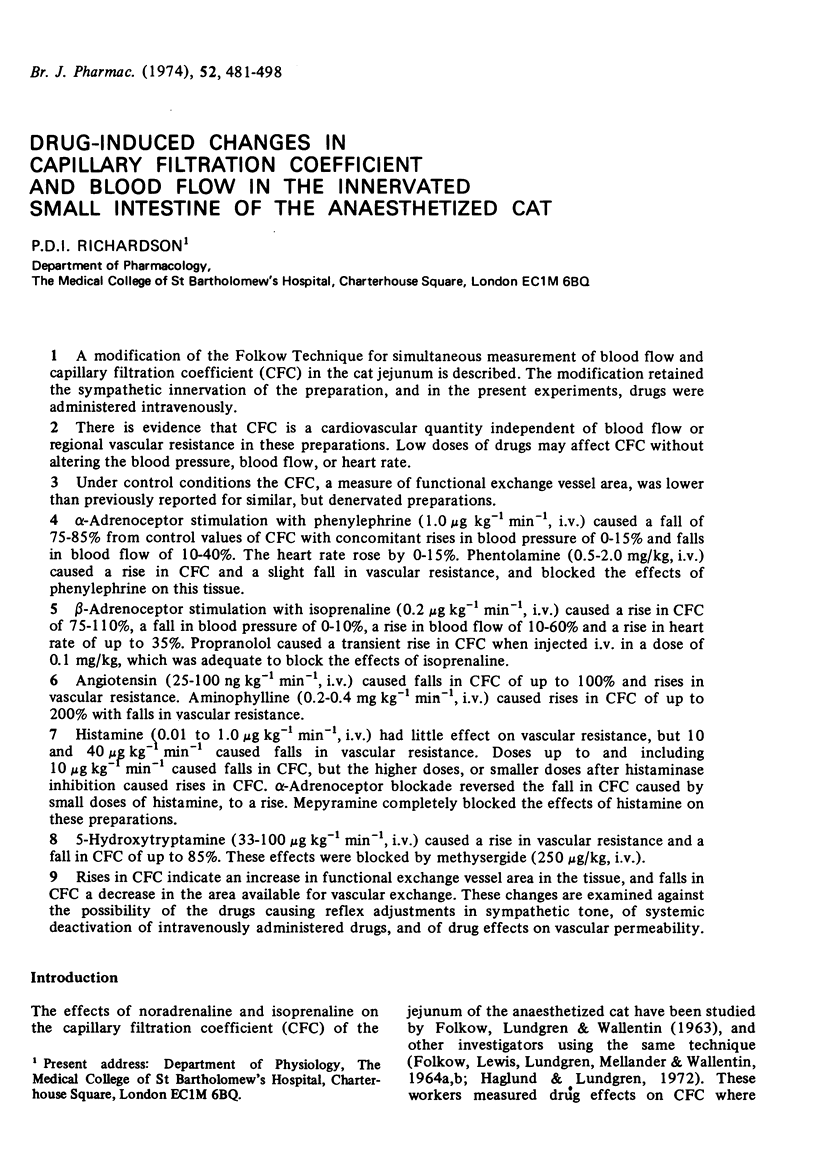



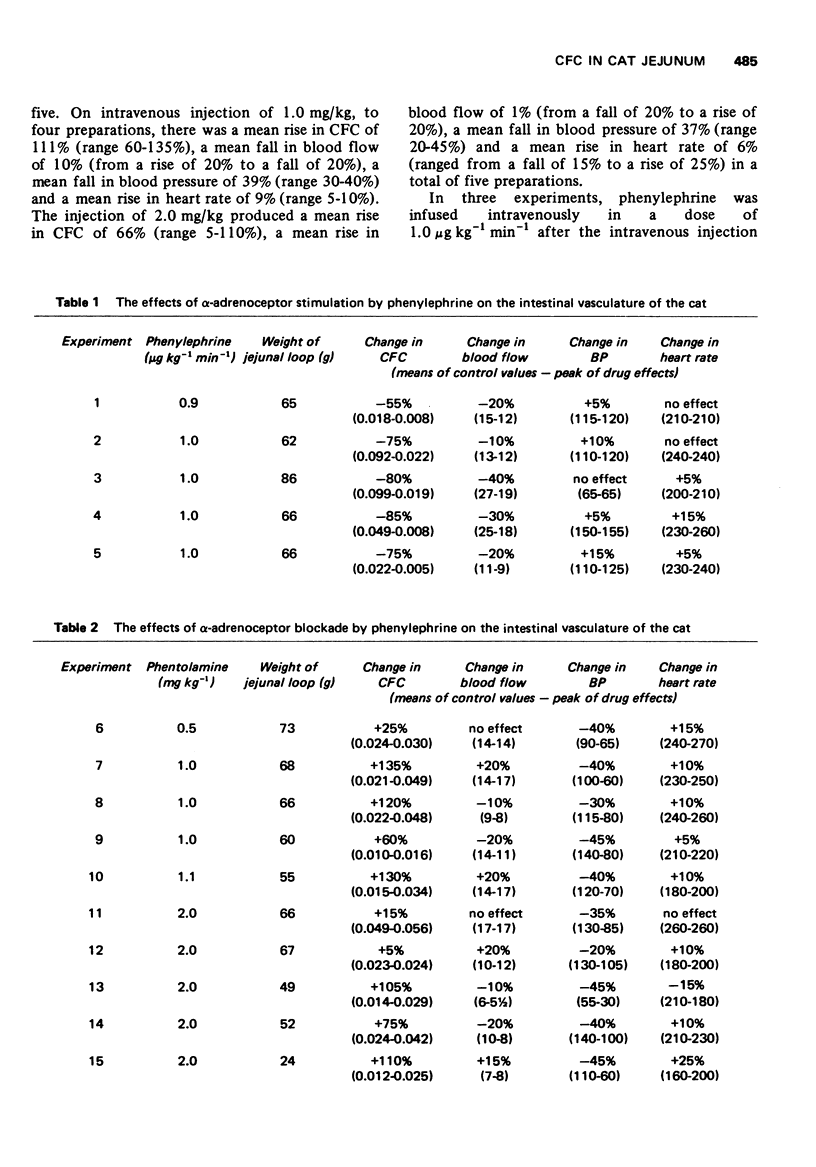
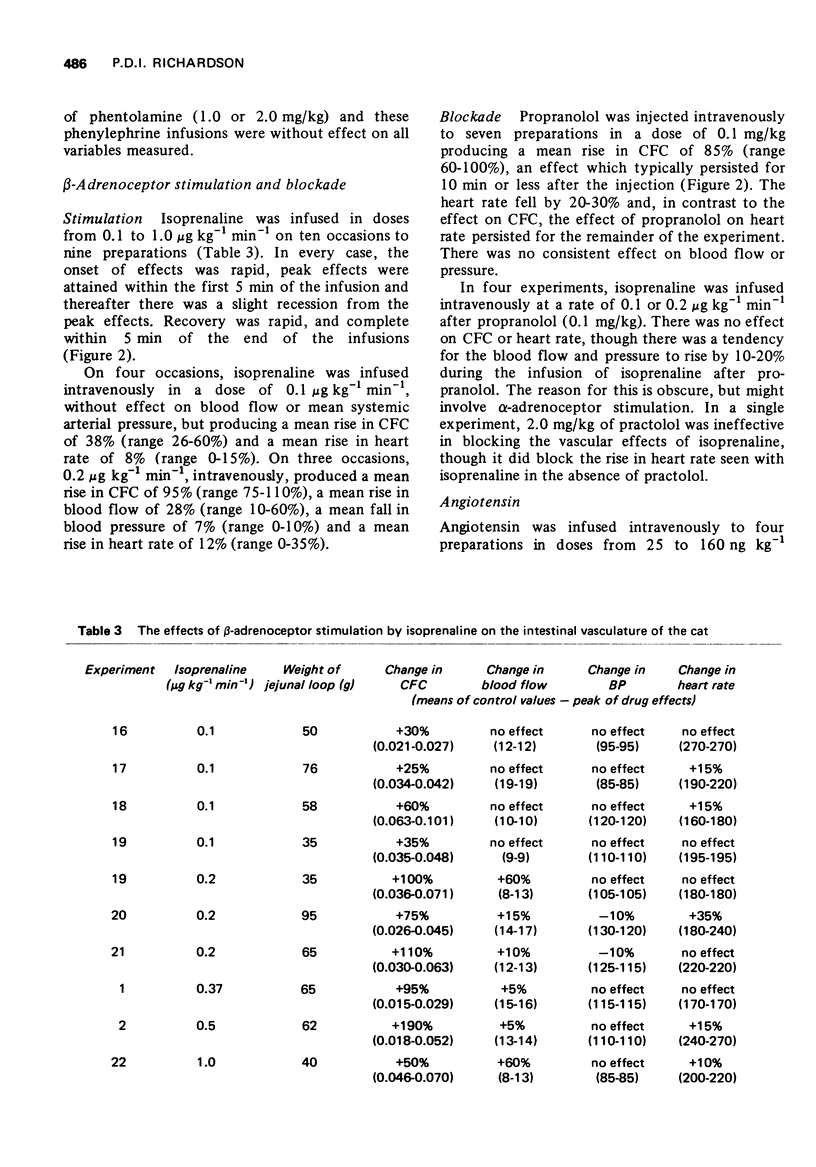
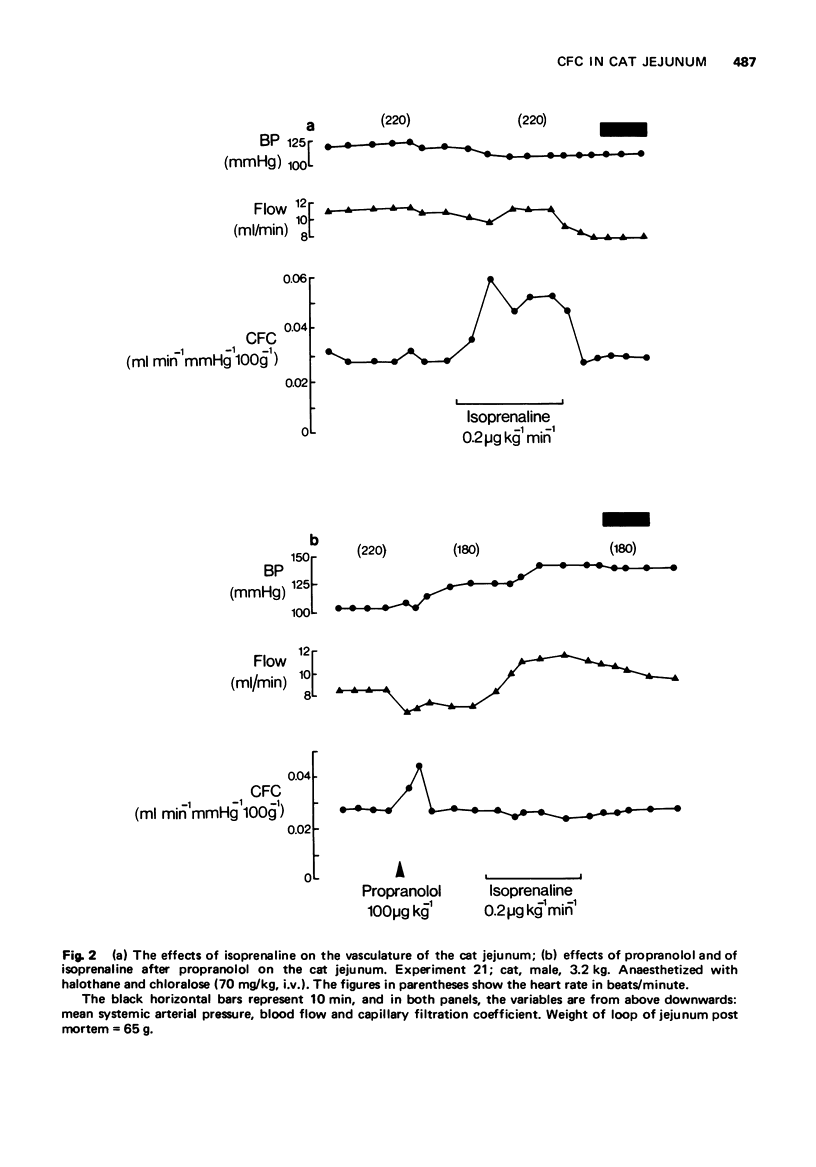
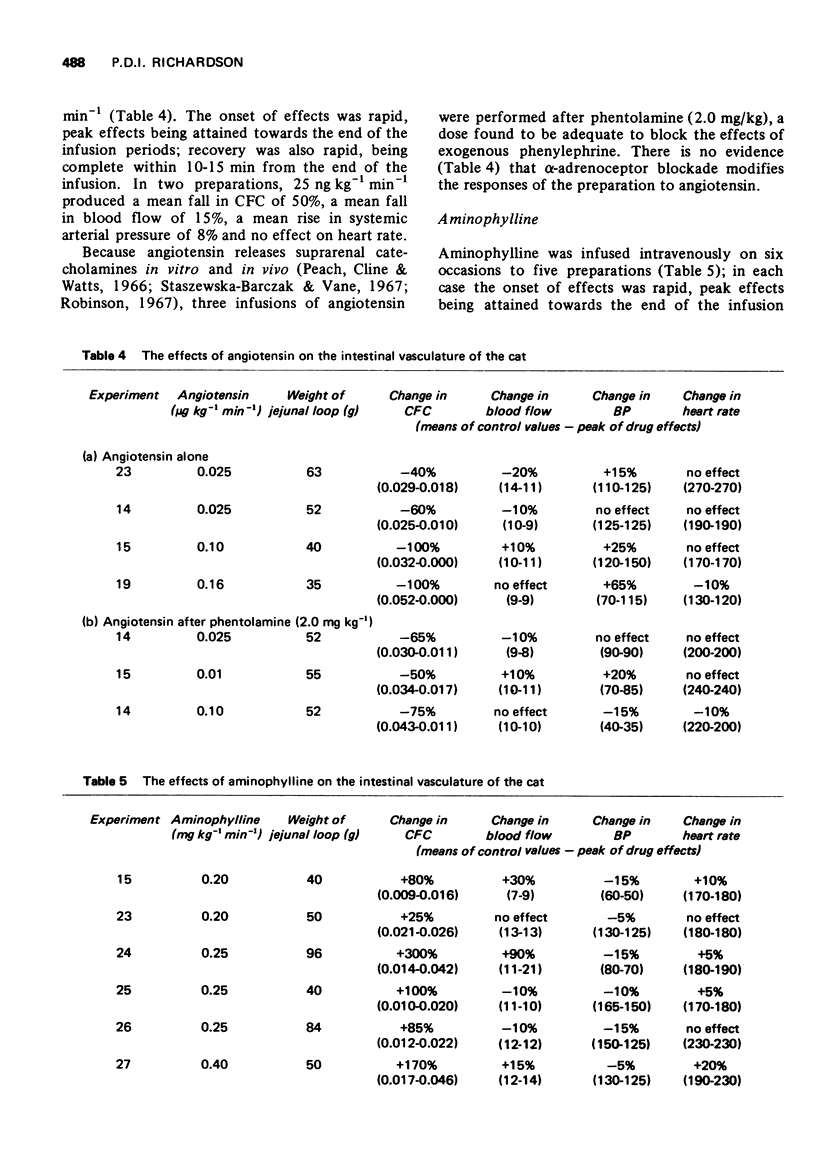
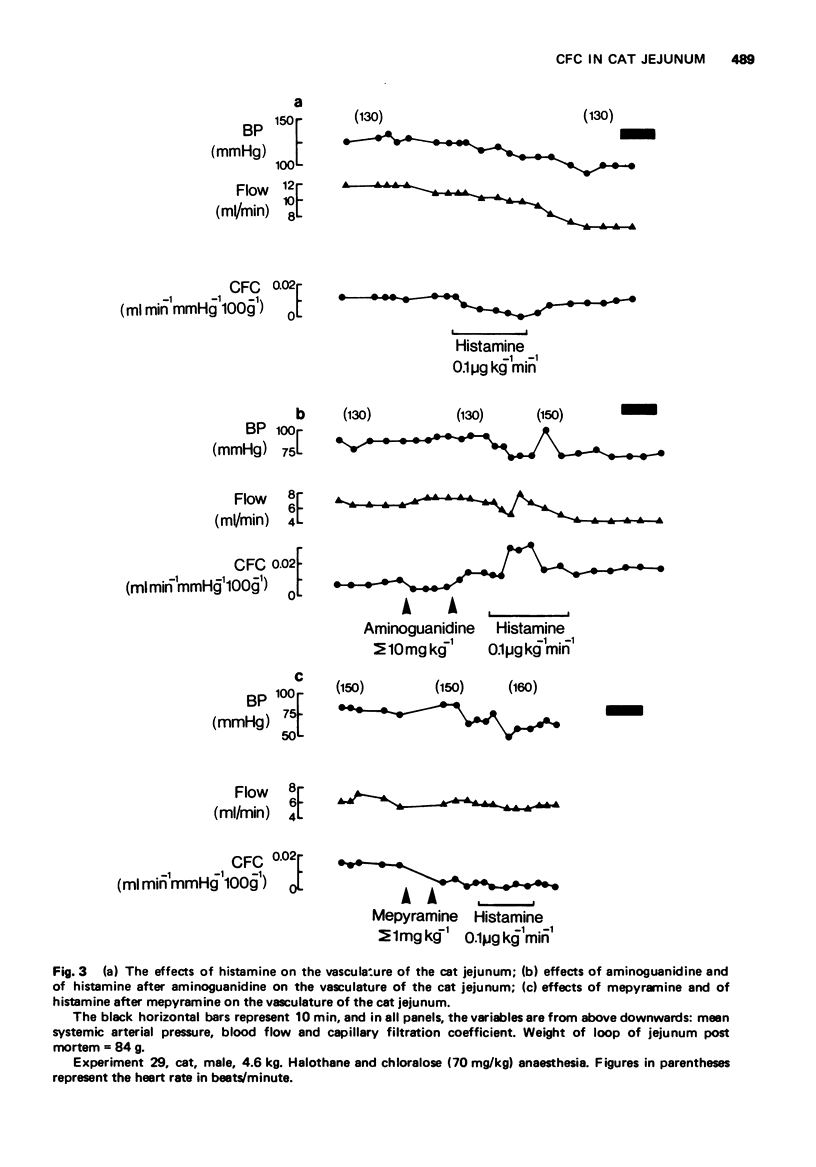
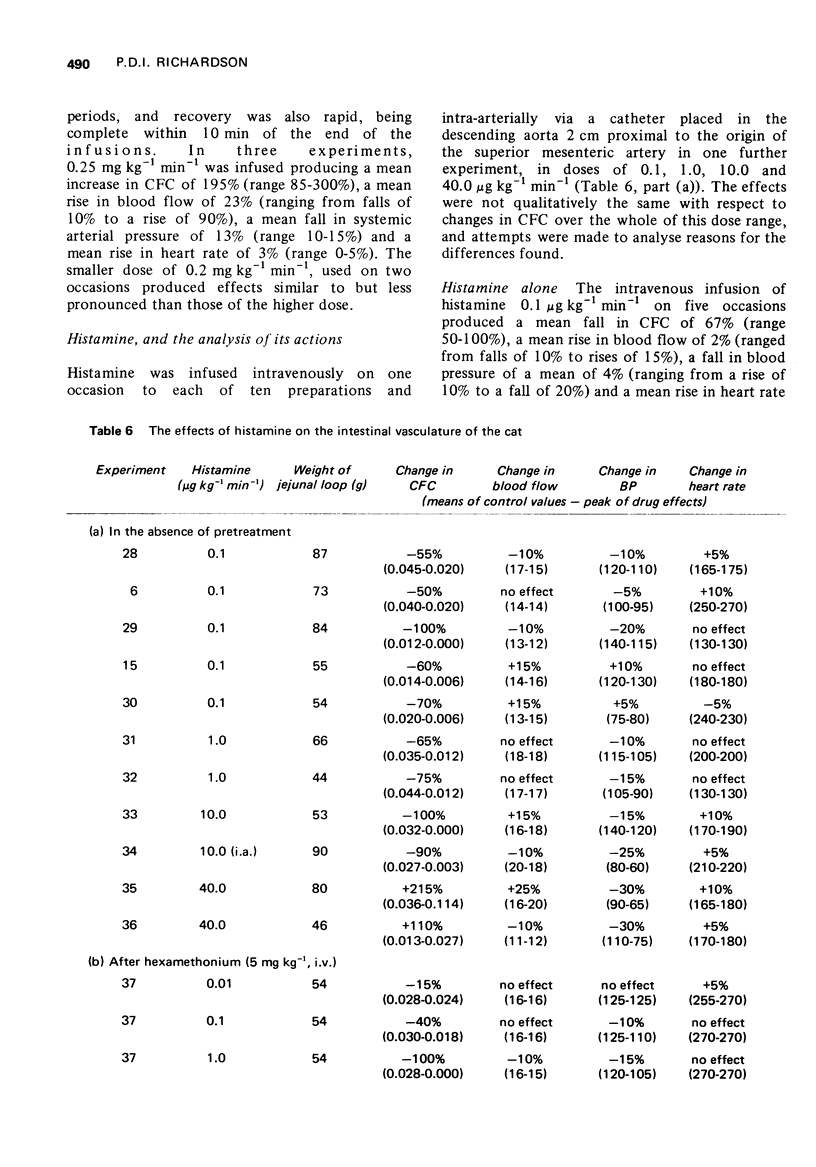
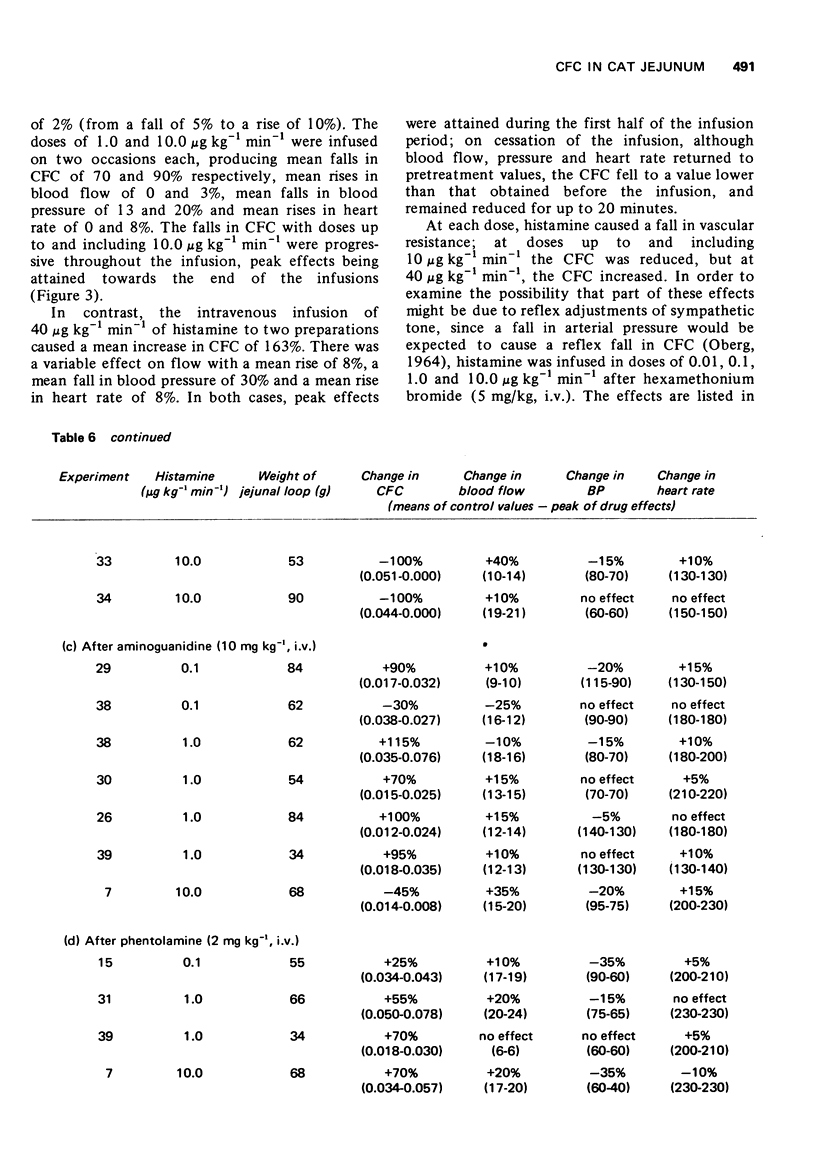
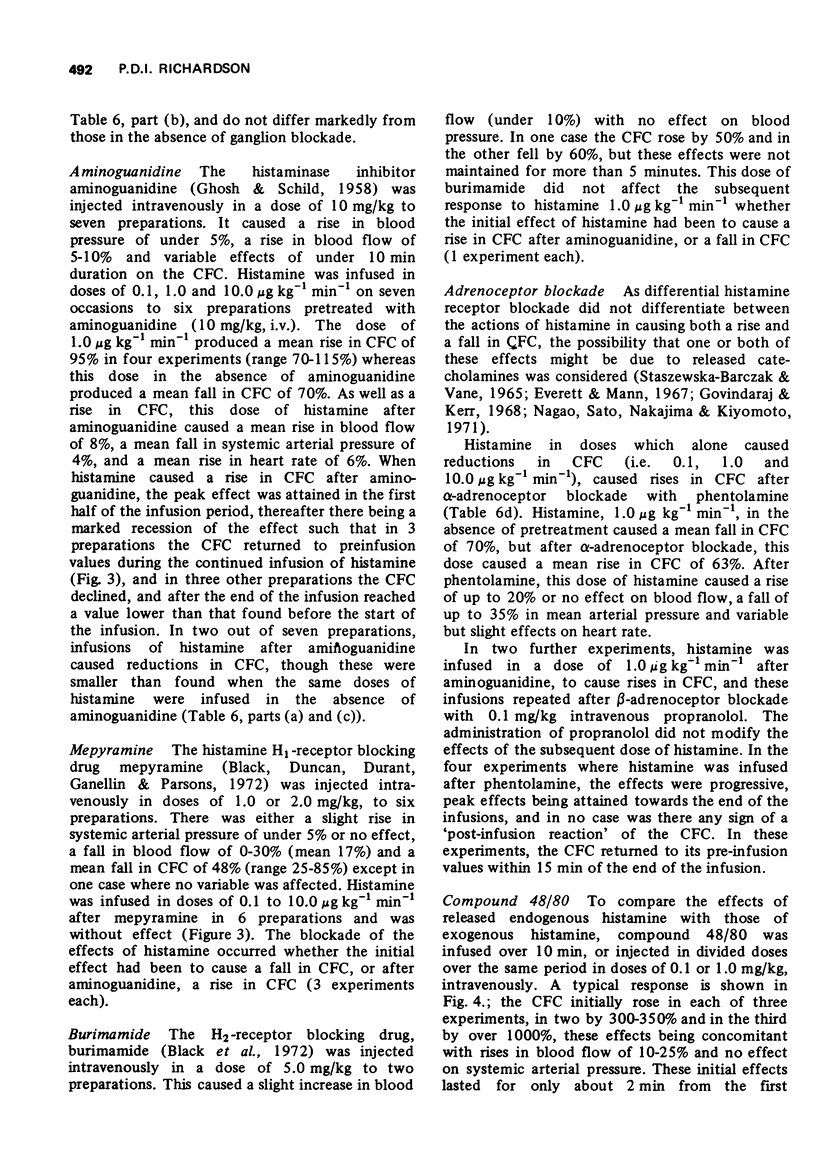


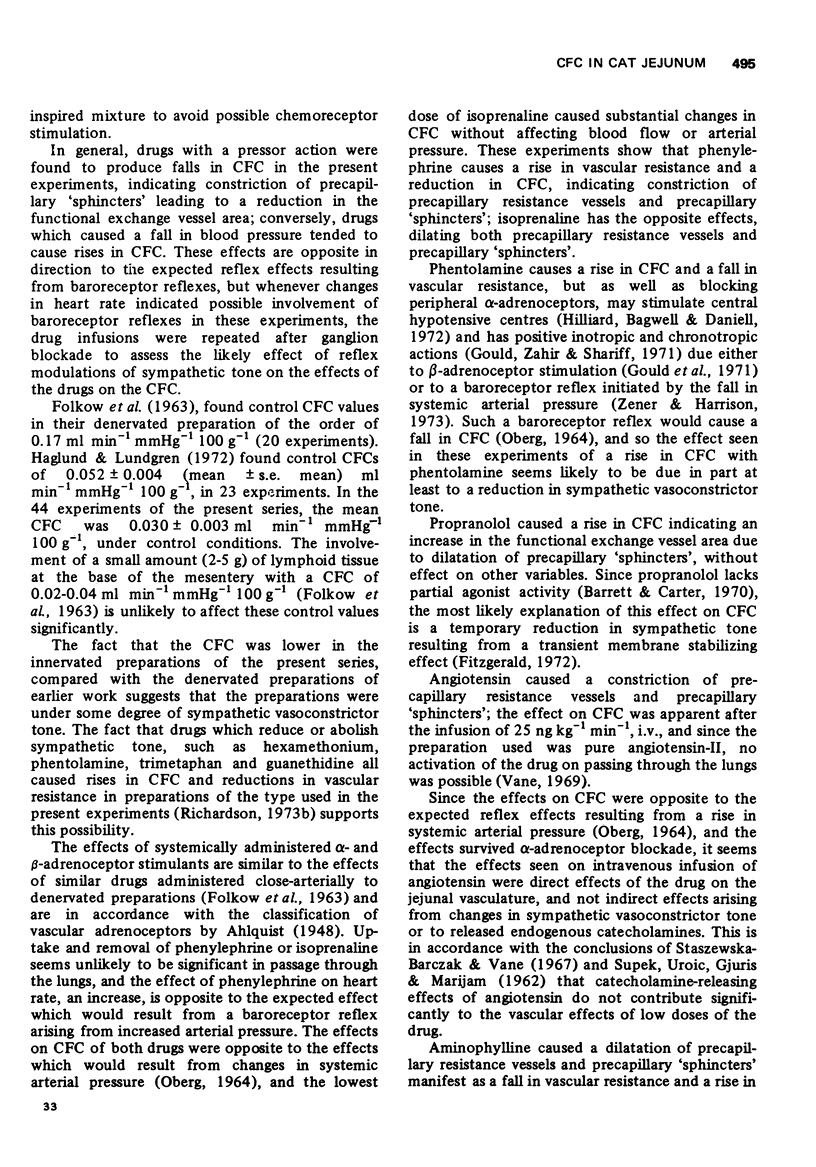
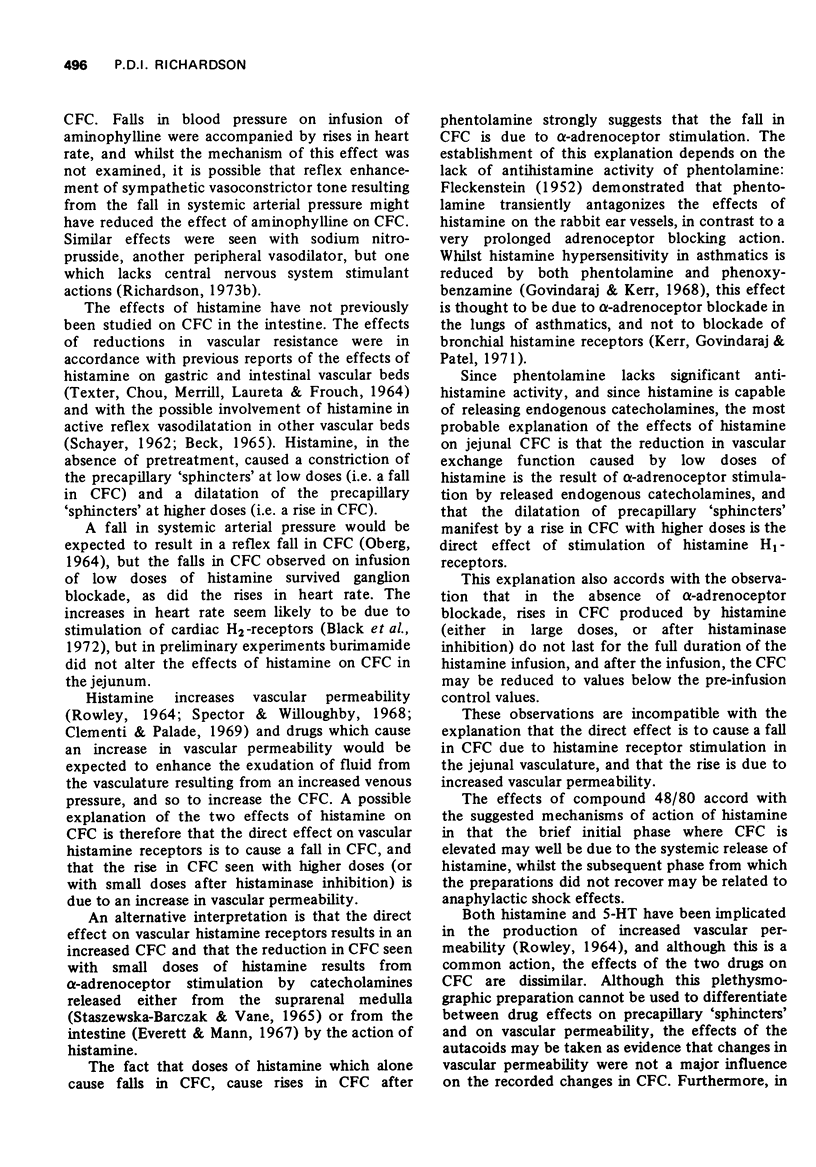
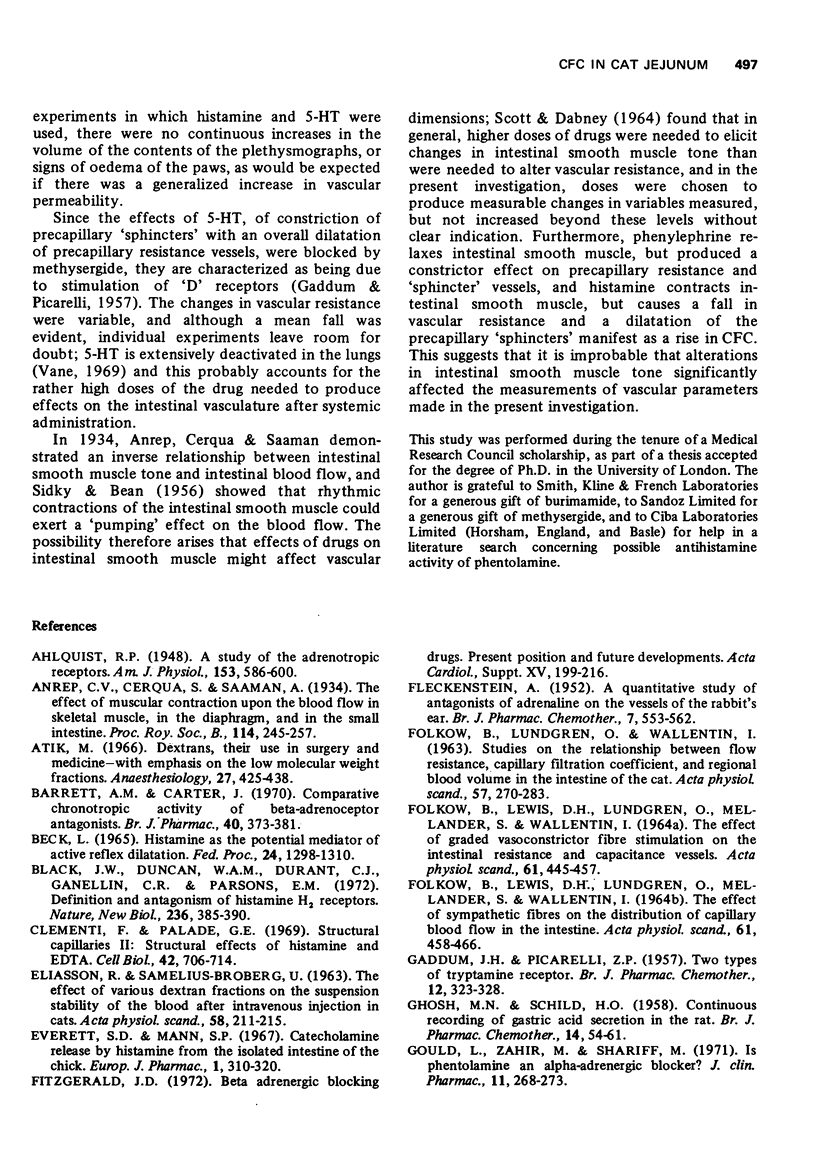
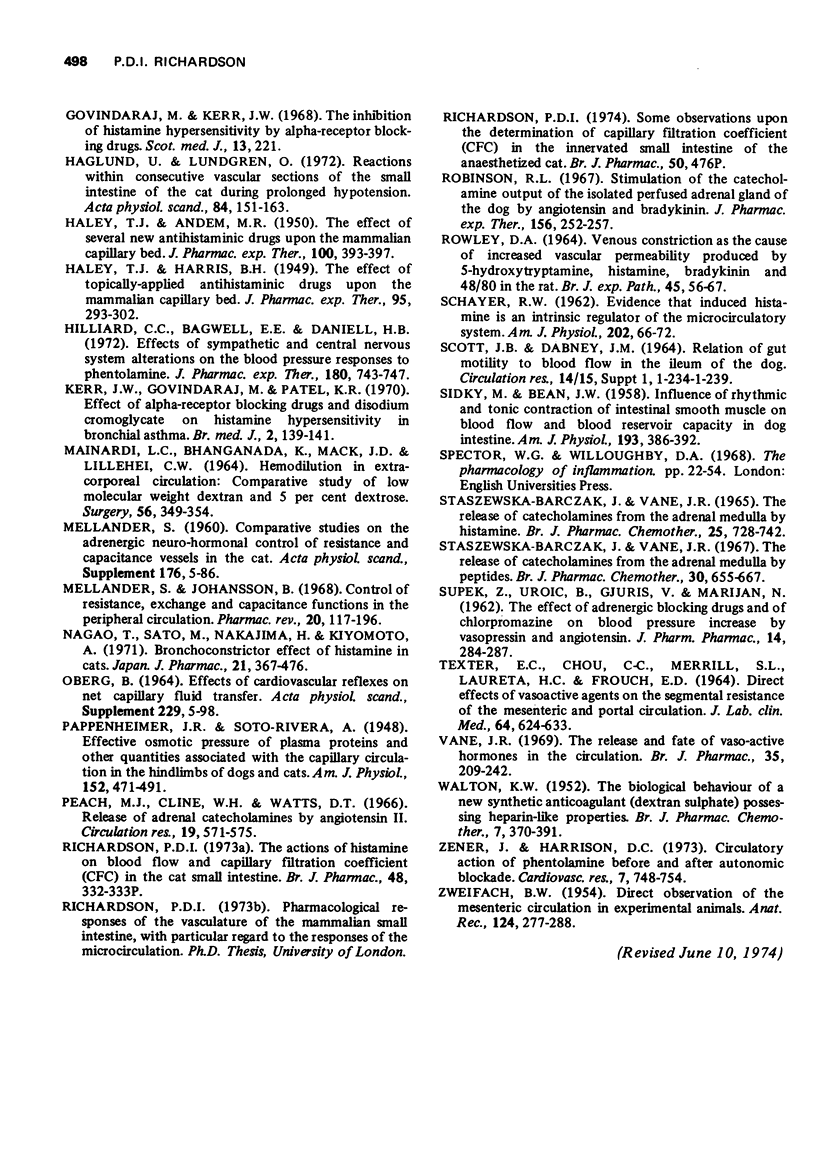
Selected References
These references are in PubMed. This may not be the complete list of references from this article.
- Barrett A. M., Carter J. Comparative chronotropic activity of beta-adrenoceptive antagonists. Br J Pharmacol. 1970 Nov;40(3):373–381. doi: 10.1111/j.1476-5381.1970.tb10619.x. [DOI] [PMC free article] [PubMed] [Google Scholar]
- Beck L. Histamine as the potential mediator of active reflex dilatation. Fed Proc. 1965 Nov-Dec;24(6):1298–1310. [PubMed] [Google Scholar]
- Black J. W., Duncan W. A., Durant C. J., Ganellin C. R., Parsons E. M. Definition and antagonism of histamine H 2 -receptors. Nature. 1972 Apr 21;236(5347):385–390. doi: 10.1038/236385a0. [DOI] [PubMed] [Google Scholar]
- Clementi F., Palade G. E. Intestinal capillaries. II. Structural effects ofEDTA and histamine. J Cell Biol. 1969 Sep;42(3):706–714. doi: 10.1083/jcb.42.3.706. [DOI] [PMC free article] [PubMed] [Google Scholar]
- FLECKENSTEIN A. A quantitative study of antagonists of adrenaline on the vessels of the rabbit's ear. Br J Pharmacol Chemother. 1952 Dec;7(4):553–562. doi: 10.1111/j.1476-5381.1952.tb00721.x. [DOI] [PMC free article] [PubMed] [Google Scholar]
- FOLKOW B., LEWIS D. H., LUNDGREN O., MELLANDER S., WALLENTIN I. THE EFFECT OF GRADED VASOCONSTRICTOR FIBRE STIMULATION ON THE INTESTINAL RESISTANCE AND CAPACITANCE VESSELS. Acta Physiol Scand. 1964 Aug;61:445–457. [PubMed] [Google Scholar]
- FOLKOW B., LEWIS D. H., LUNDGREN O., MELLANDER S., WALLENTIN I. THE EFFECT OF THE SYMPATHETIC VASOCONSTRICTOR FIBRES ON THE DISTRIBUTION OF CAPILLARY BLOOD FLOW IN THE INTESTINE. Acta Physiol Scand. 1964 Aug;61:458–466. [PubMed] [Google Scholar]
- FOLKOW B., LUNDGREN O., WALLENTIN I. Studies on the relationship between flow resistance, capillary filtration coefficient and regional blood volume in the intestine of the cat. Acta Physiol Scand. 1963 Mar;57:270–283. doi: 10.1111/j.1748-1716.1963.tb02591.x. [DOI] [PubMed] [Google Scholar]
- GADDUM J. H., PICARELLI Z. P. Two kinds of tryptamine receptor. Br J Pharmacol Chemother. 1957 Sep;12(3):323–328. doi: 10.1111/j.1476-5381.1957.tb00142.x. [DOI] [PMC free article] [PubMed] [Google Scholar]
- GHOSH M. N., SCHILD H. O. Continuous recording of acid gastric secretion in the rat. Br J Pharmacol Chemother. 1958 Mar;13(1):54–61. doi: 10.1111/j.1476-5381.1958.tb00190.x. [DOI] [PMC free article] [PubMed] [Google Scholar]
- Gould L., Zahir M., Shariff M. Is phentolamine an alpha-adrenergic blocker? J Clin Pharmacol New Drugs. 1971 Jul-Aug;11(4):268–273. [PubMed] [Google Scholar]
- HALEY T. J., ANDEM M. R. The effect of several new antihistaminic drugs upon the mammalian capillary bed. J Pharmacol Exp Ther. 1950 Dec;100(41):393–397. [PubMed] [Google Scholar]
- Haglund U., Lundgren O. Reactions within consecutive vascular sections of the small intestine of the cat during prolonged hypotension. Acta Physiol Scand. 1972 Feb;84(2):151–163. doi: 10.1111/j.1748-1716.1972.tb05166.x. [DOI] [PubMed] [Google Scholar]
- Hilliard C. C., Bagwell E. E., Daniell H. B. Effects of sympathetic and central nervous system alterations on the blood pressure responses to phentolamine. J Pharmacol Exp Ther. 1972 Mar;180(3):743–747. [PubMed] [Google Scholar]
- Kerr J. W., Govindaraj M., Patel K. R. Effect of alpha-receptor blocking drugs and disodium cromoglyate on histamine hypersensitivity in bronchial asthma. Br Med J. 1970 Apr 18;2(5702):139–141. doi: 10.1136/bmj.2.5702.139. [DOI] [PMC free article] [PubMed] [Google Scholar]
- MAINARDI L. C., BHANGANADA K., MACK J. D., LILLEHEI C. W. HEMODILUTION IN EXTRACORPORAL CIRCULATION: COMPARATIVE STUDY OF LOW MOLECULAR WEIGHT DEXTRAN AND 5 PERCENT DEXTROSE. Surgery. 1964 Aug;56:349–354. [PubMed] [Google Scholar]
- Mellander S., Johansson B. Control of resistance, exchange, and capacitance functions in the peripheral circulation. Pharmacol Rev. 1968 Sep;20(3):117–196. [PubMed] [Google Scholar]
- Nagao T., Sato M., Nakajima H., Kiyomoto A. Bronchoconstrictor effect of histamine in cats. Jpn J Pharmacol. 1971 Aug;21(4):467–476. doi: 10.1254/jjp.21.467. [DOI] [PubMed] [Google Scholar]
- Peach M. J., Cline W. H., Jr, Watts D. T. Release of adrenal catecholamines by angiotensin. II. Circ Res. 1966 Sep;19(3):571–575. doi: 10.1161/01.res.19.3.571. [DOI] [PubMed] [Google Scholar]
- ROWLEY D. A. VENOUS CONSTRICTION AS THE CAUSE OF INCREASED VASCULAR PERMEABILITY PRODUCED BY 5-HYDROXYTRYPTAMINE, HISTAMINE, BRADYKININ AND 48/80 IN THE RAT. Br J Exp Pathol. 1964 Feb;45:56–67. [PMC free article] [PubMed] [Google Scholar]
- Richardson P. D. Proceedings: Some observations upon the determination of capillary filtration coefficient (CFC) in the innervated small intestine of the anaesthetized cat. Br J Pharmacol. 1974 Mar;50(3):476P–476P. [PMC free article] [PubMed] [Google Scholar]
- Robinson R. L. Stimulation of the catecholamine output of the isolated, perfused adrenal gland of the dog by angiotensin and bradykinin. J Pharmacol Exp Ther. 1967 May;156(2):252–257. [PubMed] [Google Scholar]
- SCHAYER R. W. Evidence that induced histamine is an intrinsic regulator of the microcirculatory system. Am J Physiol. 1962 Jan;202:66–72. doi: 10.1152/ajplegacy.1962.202.1.66. [DOI] [PubMed] [Google Scholar]
- SCOTT J. B., DABNEY J. M. RELATION OF GUT MOTILITY TO BLOOD FLOW IN THE ILEUM OF THE DOG. Circ Res. 1964 Aug;15:SUPPL–SUPPL:239. [PubMed] [Google Scholar]
- SIDKY M., BEAN J. W. Influence of rhythmic and tonic contraction of intestinal muscle on blood flow and blood reservoir capacity in dog intestine. Am J Physiol. 1958 May;193(2):386–392. doi: 10.1152/ajplegacy.1958.193.2.386. [DOI] [PubMed] [Google Scholar]
- SUPEK Z., UROIC B., GJURIS V., MARIJAN N. The effect of adrenergic blocking agents and of chlorpromazine on blood pressure increase by vasopressin and angiotensin. J Pharm Pharmacol. 1962 May;14:284–287. doi: 10.1111/j.2042-7158.1962.tb11095.x. [DOI] [PubMed] [Google Scholar]
- Staszewska-Barczak J., Vane J. R. The release of catechol amines from the adrenal medulla by histamine. Br J Pharmacol Chemother. 1965 Dec;25(3):728–742. doi: 10.1111/j.1476-5381.1965.tb01795.x. [DOI] [PMC free article] [PubMed] [Google Scholar]
- Staszewska-Barczak J., Vane J. R. The release of catecholamines from the adrenal medulla by peptides. Br J Pharmacol Chemother. 1967 Aug;30(3):655–667. doi: 10.1111/j.1476-5381.1967.tb02172.x. [DOI] [PMC free article] [PubMed] [Google Scholar]
- TEXTER E. C., Jr, CHOU C. C., MERRILL S. L., LAURETA H. C., FROHLICH E. D. DIRECT EFFECTS OF VASOACTIVE AGENTS ON SEGMENTAL RESISTANCE OF THE MESENTERIC AND PORTAL CIRCULATION. STUDIES WITH 1-EPINEPHRINE, LEVARTERENOL, ANGIOTENSIN, VASOPRESSIN, ACETYLCHOLINE, METHACHOLINE, HISTAMINE, AND SEROTONIN. J Lab Clin Med. 1964 Oct;64:624–633. [PubMed] [Google Scholar]
- Vane J. R. The release and fate of vaso-active hormones in the circulation. Br J Pharmacol. 1969 Feb;35(2):209–242. doi: 10.1111/j.1476-5381.1969.tb07982.x. [DOI] [PMC free article] [PubMed] [Google Scholar]
- WALTON K. W. The biological behaviour of a new synthetic anticoagulant (dextran sulphate) possessing heparin-like properties. Br J Pharmacol Chemother. 1952 Sep;7(3):370–391. doi: 10.1111/j.1476-5381.1952.tb00705.x. [DOI] [PMC free article] [PubMed] [Google Scholar]
- ZWEIFACH B. W. Direct observation of the mesenteric circulation in experimental animals. Anat Rec. 1954 Sep;120(1):277–291. doi: 10.1002/ar.1091200115. [DOI] [PubMed] [Google Scholar]


